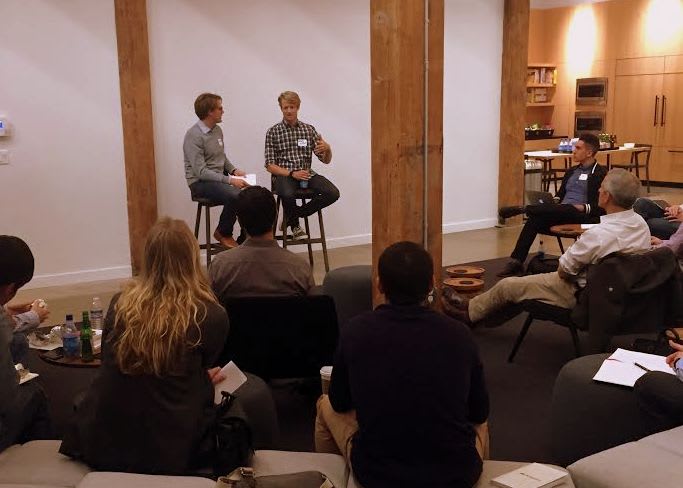4 minute read / Nov 5, 2015 /
3 Go-to-Market Insights from Kenny van Zant at SaaS Office Hours
 Last night, SaaS Office Hours hosted go-to-market guru Kenny van Zant. Kenny is a serial entrepreneur started his career as founder and COO at BroadJump, a broadband software company that grew to $100M in bookings. He was awarded the Ernst & Young Entrepreneur of the Year in 2002. After BroadJump, Kenny built the go to market organization at Solarwinds, a $4B market cap infrastructure software company, and Asana, a fast-growing productivity company, both of which exemplify a unique go-to-market approach, Flywheel Model, brilliantly.
Last night, SaaS Office Hours hosted go-to-market guru Kenny van Zant. Kenny is a serial entrepreneur started his career as founder and COO at BroadJump, a broadband software company that grew to $100M in bookings. He was awarded the Ernst & Young Entrepreneur of the Year in 2002. After BroadJump, Kenny built the go to market organization at Solarwinds, a $4B market cap infrastructure software company, and Asana, a fast-growing productivity company, both of which exemplify a unique go-to-market approach, Flywheel Model, brilliantly.
As Kenny told us last night, that experience of selling enterprise software quarter by quarter pushed him to develop and discover businesses that have flywheel effect, that generate revenue even on weekends when no one is working because there is a huge amount of momentum in the customer acquisition strategies. Like flywheels in engines which capture energy and release it to deliver consistent output even when power isn’t consistent, Flywheel Business Models deliver consistent and accelerating customer acquisition even when salespeople and marketers aren’t working.
These are three of the key points Kenny made last night during our wide-ranging conversation.
Freemium is a great go to market strategy, but only if the business meets several characteristics. First, the company has to be a product driven company not a sales driven company. Second, the number of potential users must number in the millions because the conversion rates for freemium businesses are often in the single-digit percentages. To be able to generate meaningful revenue, the addressable market size must be quite large. Third, the time to value for user should be on the longer side. Freemium products benefit from very long trial periods, and use mechanisms aside from time limits to convert users into paid. fourth, the initial user is not the ultimate buyer of the software. Providing software for free to users maximizes distribution and increases the odds of closing the ultimate purchaser. Last, the company must be well-capitalized because flywheel business models require patience and time to achieve exponential growth.
Friction in a sales process is useful. Friction can be a terrific tool to help prequalify customers. In traditional sales-driven SaaS models, sales development teams and account executives perform this function. In flywheel models, the product and on-boarding flows must do this.
Friction forces potential customers to jump through a few hoops in order to use the product. Those users with strong initial intent, and ultimately good product market fit, will push through some friction at the outset. Users whose intent isn’t strong enough to overcome the friction probably work great customers anyway and would have become customer support/success headaches.
At each stage in a startup, it’s important to figure out exactly the characteristics of the total universe of customers that are addressable by a product, and focus exclusively on those. most out of slots with minimum viable products, and so will be able to address only 5 to 10% of the addressable market with that minimum viable product. Over time, as the product team enriches the offering, more and more of the market becomes addressable. But at each step, there should be friction to ensure that the right customer segments are the ones prequalifying themselves into the product.
Match pricing complexity with the sophistication of your buyer. How many pricing plans should a product have? Some companies adopt simple pricing plans with three or four alternatives, and highlight the most popular. Other companies offer super complex, highly customizable price plans. For example, startups selling software to marketers, who are pressed for time offer simple pricing plans. On your hand, startups selling to IT operations teams, who are technical, and sophisticated buyers of many different types of technology, and who manage custom environments can go to market with far more sophisticated pricing plans. Heroku’s marketplace is a great example of this. Each engineer can choose precisely the size, sophistication and number of databases required for each project.
There are few people who have built and advised as many flywheel businesses is Kenny, and who have the go to market sophistication he does. A huge thanks to Kenny for sharing his insights last night. Thank you, Kenny!